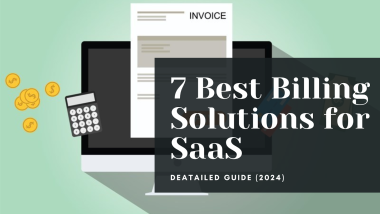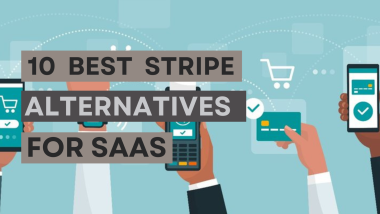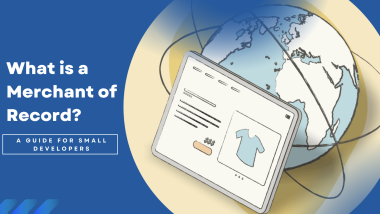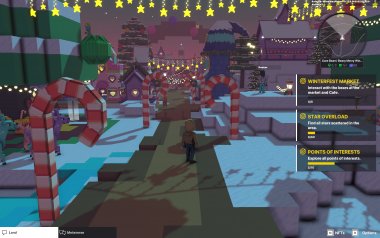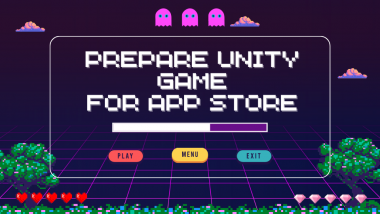The inspiration strikes. You draw up plans and dream of the perfect game–no–your dream game. Coding languages, artistic ability, applied in countless hours of creative labor, it can all pass in a blink of an eye. Just what are you getting into?
For many a game dev, this is how the mixture of art and code that is the video game’s creative process begins. For those making their first game intended for wide appeal on a public market (such as Steam), it may likely come as a surprise just how many hidden steps exist in this process, as well as unknown necessities!
My own first Steam game, Apollyon, began development amidst the pandemic and released Early Access in its later stages, with a full release last year. Here we will discuss the requirements for your first published game, just what the process was with my own released game, and how you can use this in your game’s development plans!
What does it take to publish a game?
It is often said in areas of game development that every game released is a miracle. This is not entirely hyperbole! Quality Assurance, ensuring the audience receives a project without issues; marketing, reaching an adequately sized player base; with an additional split focus on both programming and art, sound design, and visual effects. These are all instruments in a one-person band, as most indie teams cannot support enough developers for any to wear just one hat.
However, while it may be a minor miracle, it is one that was repeated on Steam alone 14,494 times in 2023! With those numbers and the right steps, you, too, can publish your first Steam game.
Restraint
The inspiration strikes again… and builds. You’re going to make the next AAA MMORPG fantasy epic, with branching quests and dialogue and–
Hold it right there, as the first factor that can ruin a game’s development is building too big. Planning such a game is a part of many a game dev’s early career before they realize just the number of developers and tens of thousands of hours that are put into such games. I, too, planned such a game when I was first learning to code!
A Game Design Document is a great first step in any game’s life cycle, as it ensures adherence to a general vision. With this, it can be quickly apparent if the vision is far too big or if you have more room for polish. In this GDD, a staple in the industry, you can also apply your unique skills to the game plan.
Required Skills
In this document, I recommend looking at your skills in game development and dreaming of a game that suits your strengths. With a good game plan, (and a Game Design Document) you can make both your dream game and one without too many bells and whistles that threaten the timeline of the project’s development.
For example, the well-known developer of Stardew Valley, a hit indie game that hit big beyond the average indie dev’s wildest dreams, spent four and a half years on their game! It is beautiful and unique, but it is not technically astounding. It focused on the developer’s strengths, and earned quite the reward for it!
If you are an experienced gamer and programmer, focus on combat and level design! If you are a pixel artist, such animations and fluid transitions have made many a game, such as Undertale which launched with several bugs and messy code! If you are a writer, you could roll it all together and make a narrative video game, which is the very path I followed!
Time
I do not recommend taking even a fourth of Stardew Valley’s development time on your first (keyword: first) game, however! A great deal of time is required to make a fully polished, QA-tested, widely marketed, and generally beautified video game, all of which will dramatically aid in your visibility on Steam!
Keeping the vision achievable, applying your strongest skills, and ensuring to block out the time in your schedule to devote to your project, all these things will ensure you join those 14,494 publishers on Steam! Not a grand miracle, after all.
My experience developing Apollyon: River of Life
As a first-time developer having now published one game on Steam, with a second one now wishlisting, I can safely say there were many a lesson learned in the process. This published game, like many, began with a spark of that same inspiration.
Initial vision
Apollyon was born out of a fantasy story I had written, and as I developed the rules of the magic system in this long-running world, I realized just how gamified it could become.
With the pandemic in full swing, I had the benefit of a wealth of time to utilize, and with this idea as motivation, managed to apply it fully. Unreal Engine had supported many a project of mine before… and this time it would support a project fully to the end.
Rapid production
Sketches of UI systems on notepads later, with descriptions of general game flow, a vague plan of the menu, the server connections, and a roadmap of generally what I desired in the game. These things all combined into an effective Game Design Document, though I later coalesced them all into more organized folders when I doubled down on making game this a reality.
System after system, my careers in programming and writing allowed quick development, as Apollyon played to my strengths! However, my first major roadblock was that of UI, as I am not a graphic designer. This issue persisted and had to be solved later, as you’ll see.
Early access (EA)
Apollyon used Early Access and benefitted from the feedback from my most dedicated players. My discord community grew, but it was quickly apparent that my wildest dreams of hitting it big like Stardew Valley would not come to pass. In fact, Stardew Valley is a miracle among miracles in that regard!
However, Early Access can hurt a game’s marketing cycle, and I learned this with Apollyon. Early Access on Steam is meant for a game to be released to a smaller audience of dedicated players who play the game while it is still in an alpha state, buggy, and unfinished. This is a great opportunity for developers to get feedback from their audience, however, it can severely damage the reputation of the game if it is released too early. In addition, Steam’s marketing cycle focuses on the first time the game is available to the public, i.e. Early Access.
Not every game needs EA, and unless you have a great following already and just wish to polish the game for a few more months, I do not recommend using it! You can, of course, release beta keys to dedicated play-testers, and even launch the game on itch.io as a form of Early Access! If your aim with your first game is simply small publicity and skill building, Early Access can be a great way to get some attention directed to your game and some instant feedback, but in other cases, it can hurt the marketing cycle of your game!
Full release
Apollyon found greater success in full release, garnering reviews and content creators across several platforms for many weeks after launch, before dying down. This is regular, the first week of a Steam game being on the market is, on average, 20% of its lifetime sales!
With it, I’ve finished a passion project and created an incredibly niche game, and through that, I have learned some very valuable lessons I’ll apply to my next! I hope to share some of these with you, as well.
General Tips
Market, Market, Market
Steam offers significant visibility on its store, directing users to any game that their algorithm assumes they may be interested in. However, Steam provides very little attention to games that already have little attention and do not sell. You only get one launch, and while there are many statistics on how many Wishlists translate to first-week sales (22% in my case), and how many first-week sales translate to first-year sales (roughly 500%). It all depends on marketing, and in this business, marketing must take up a significant portion of the gamedev’s time.
The same is true of self-published authors, as well as freelance artists of various kinds. The audience and following build hype around a product, and if you gain enough of a following on your game, the Steam algorithm will pick it up and can, in some cases, double or triple your entire following’s purchases in the first week!
Marketing begins early… in the initial idea!
I recommend researching such numbers when you need specifics later on and researching marketing methods first. Marketing does not begin once you have a marketable product. Marketing begins with the very genre of the game you wish to make!
A niche game like Apollyon? This targets a very specific crowd, such as those who love Cultist Simulator. This is not a large crowd!
A horror game with animatronics? One of the most in-demand genres on Steam.
Puzzle platformer? One of the most over-saturated markets, to the point that the average dark fantasy deck builder (the most in-demand) surpasses the highest-earning indie puzzle platformers.
Wishlists are key
Steam users curate a personal list of games they desire, known as a Wishlist. It sends them emails when a game launches and at every sale, and it is the single most powerful tool for a game’s financial success on Steam. Additionally, there is a sweet spot around 7000 wishlists that will put you over the aforementioned snowballing threshold that can double your first week’s sales.
If you can hit that at launch or surpass it, as long as your game is not a bug-ridden mess that reviews terribly, you are all but guaranteed at least moderate success.
Build a community
Interact with those who follow your game! Respond in communities, start a discord server, and join subreddits that can promote your game. This is not just marketing, these are potential QA testers, these are game dev peers who can offer advice, and these are gamers who really know your target genre.
Their help is invaluable if you can find them!
Show off, really!
While showing off is great for marketing, it is also great for motivation. Let’s face it, the hundredth hour of a game and the thousandth will feel very different. Tearing through a dozen new features in a day will feel great, but bashing your head against one enemy that refuses to target the player correctly–or a similar bug–will be maddening.
Show your game off! External feedback will shape your game to be better, and the incremental progress you see will not be so to your audience. This is incredibly motivating, especially if your game has visual differences that can clip well into public videos to send to friends… or social media!
Keeping focus on the vision of this game through all of development will make or break it. Seeing the growth of your wishlists, your community, your socials, and your game in general will aid in that more than anything!
Purpose
The most important question to ask yourself as an indie game developer is: “Who am I making this game for?” Is your goal to make a fun game for yourself, to build skills for future jobs or projects, and for friends and family to enjoy? Or is your goal to make an indie hit on Steam and live off of the royalties to your next game? Both are valid options, especially for first-time developers still building skills!
My own Steam game saw a medium indie success, and allowed me to continue to a second! To those dedicated to making a living off of independent game development, the same is true of you; with commitment (and effective marketing) the visibility that Steam offers allows any developer to create an indie hit, whether it is their first game or hundredth game!
If you are reading into the process for the first time, here is a checklist and step-by-step guide to publishing your first Steam game!
